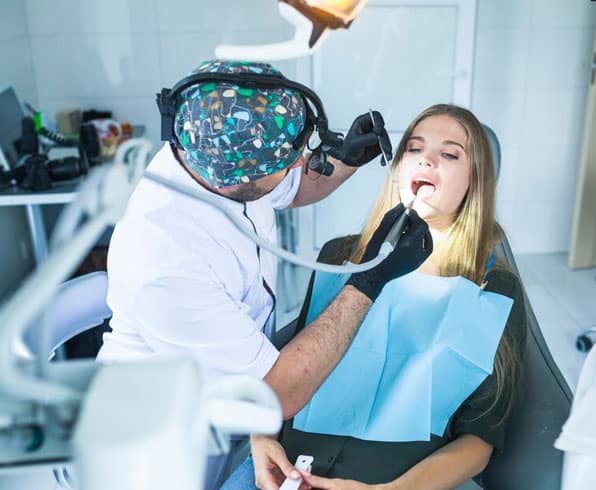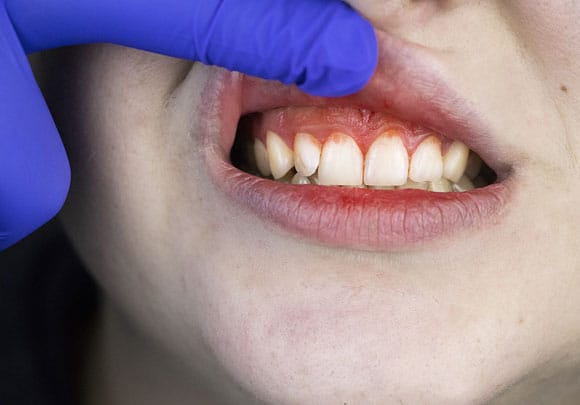
A gingivectomy is a minimally invasive surgical procedure designed to help patients battling with gum disease. This treatment is performed to remove diseased and damaged gum tissue, which allows healthier tissue to heal. Our team at Kelly Smile Dentistry can help you have strengthened gums which will better support your teeth and allow you to keep your teeth longer.
When would I need a gingivectomy?
We may recommend a gingivectomy for patients who are battling with chronic periodontal disease or gum disease. Gum disease is the inflammation of gum tissue due to bacteria. This generally occurs from the presence of plaque and tartar. Plaque and tartar are filled with bacteria that happily feed on the sugars present in our food. As bacteria feed, it produces an acid that attacks the tissue and causes a bacterial infection. As the infection rages, your gum tissue will try to protect itself by withdrawing from the source, which includes pulling away from your teeth. This act of pulling away is evident in the deepening of gum pockets or the space between the teeth and gums.

Gum Disease
Gum disease is a very common dental disorder in many adults. On average, about half of adults are suffering from some level of gum disease, and the symptoms have become so familiar that many patients no longer regard them as an issue. In many cases, you can spot the signs of gum disease. Looking in a mirror, are your gums red where the tissue meets the tooth? Are they sensitive or feeling painful? When you brush, or floss are you seeing any signs of blood? These are all indications of some form of gum disease; it can be the early form known as gingivitis or the more severe form of periodontitis and chronic periodontitis. Patients with more advanced levels will see the gum tissue receding, or pulling away from the teeth. Gum disease is the number one reason for tooth loss in adults.
Gum disease is an active bacterial infection in your body, and though that may not seem troublesome, it can have effects on other areas of your body. Studies have found that patients can have reduced immunity or even heart problems related to their dealings with gum disease. Having healthy gums is better for your oral health and your overall health.
The surgical procedure of a gingivectomy is done to remove bacteria damaged tissue. This procedure should then induce a healing response and reduce the depth of the gum pockets slowing down the progression of gum disease.
How is a gingivectomy performed?
Gingivectomy is commonly performed with dental laser technology. Using laser wavelengths, we can precisely incise or remove bacteria damaged gingiva. This process is a step in restorative, cosmetic, and periodontal repair. Laser removal of damaged tissue allows for the rapid healing of the tissue while also reducing pain versus other removal procedures. With laser technology, we rarely need to place stitches or sutures because the tissue is sealed while we work. Laser removal also means less inflammation post surgery and less discomfort.
